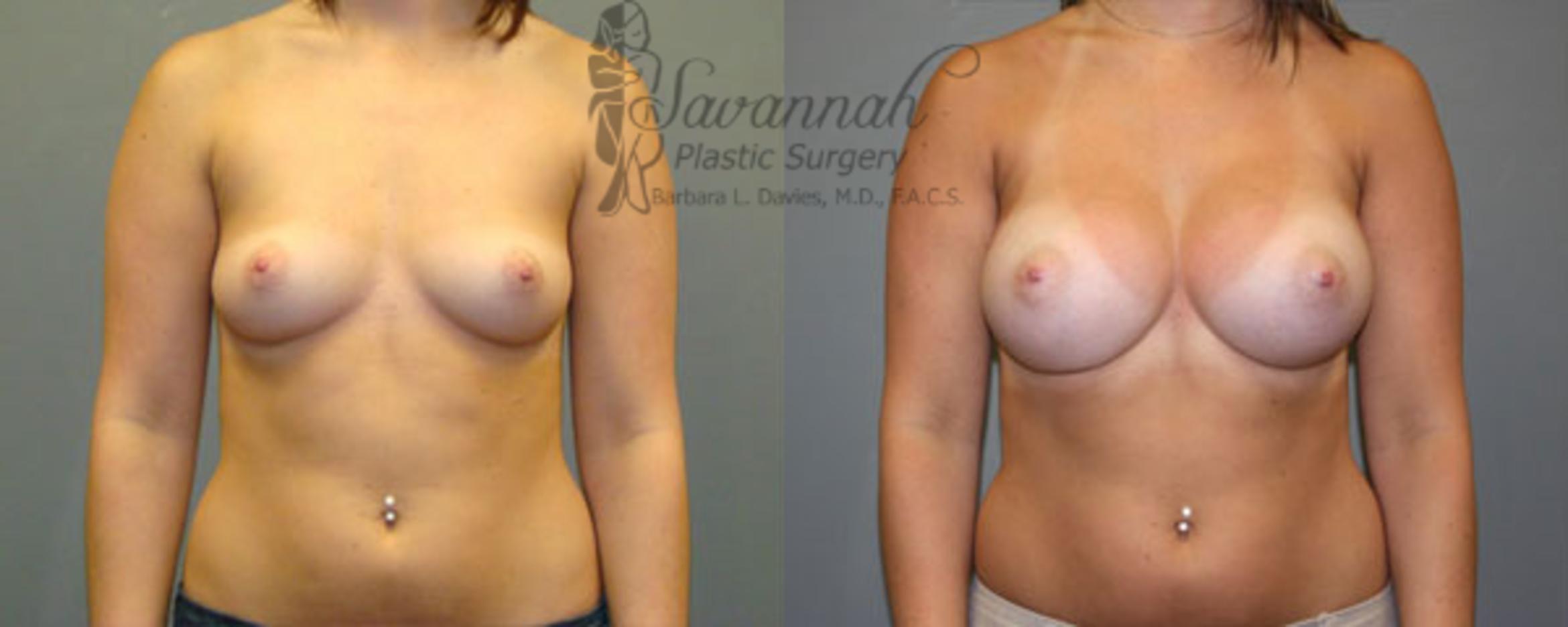Choosing to get breast implants is an exciting decision—often one that’s been months or even years in the making. If you’re like most women, you’ve probably wondered what the breast augmentation recovery timeline looks like and when you’ll start to see your results. The good news is that recovery after breast augmentation is typically brief and smooth for most patients.
How Long Is Breast Augmentation Recovery?
You’ll need to take at least a few days off work or school after your breast augmentation. Most patients feel ready to return to nonstrenuous jobs and daily activities in about a week. If your procedure is combined with a breast lift, a tummy tuck, or another surgery, you can expect a slightly longer recovery period.
The entire breast augmentation healing process takes weeks, and it can be several months before you see the full results of your procedure.
Breast Augmentation Recovery Timeline
Here’s a general timetable for breast augmentation recovery to help you understand what to expect as your body heals and your new contours begin to take shape.
The First 4 Days: Rest, Heal, and Move Gently
Breast augmentation is an outpatient procedure, meaning you’ll return home on the day of surgery. You’ll need someone to drive you home and remain with you for at least the initial 24 hours after the operation.
- Activity: We encourage patients to go for brief walks around the house, starting when they get home. Movement boosts circulation, which is an important part of healing. Expect to feel sore during the first few days.
- Discomfort: You can manage discomfort with a prescription or over-the-counter pain medication.
- Sleep: Sleep on your back with your upper body elevated by pillows for the first few weeks after surgery. This position facilitates healing by not putting pressure on the breasts.
1 Week After Surgery: Early Healing and Follow-Up Care
By the end of the first week, most patients notice that soreness is improving and energy levels are starting to return. You’ll also come in for your post-op appointment to check how your incisions are healing.
- Activity: You can begin going for longer walks and exerting a little more energy. Minor stretching is OK, but don’t push your limits—listen to your body.
- Discomfort: Some mild tightness, swelling, or sensitivity is still normal. Most patients no longer need prescription pain medication at this point.
- Sleep: Continue sleeping on your back to protect your incisions and maintain breast symmetry as tissues settle.
10 days After Surgery: Gaining Comfort and Confidence
Around day 10, the majority of swelling and bruising has improved, though your final results will still be developing. This is often when patients start feeling ready to get back into their normal routines—but patience is key.
- Activity: If cleared by Dr. Davies, you can resume light cardio exercises that don’t involve using your upper body, such as brisk walking or biking. It’s important to be patient and not exert too much energy. Studies show that exercising early in the recovery process doesn’t increase the rate of complications.
- Discomfort: You may still experience occasional twinges or muscle stiffness, especially with movement, but overall comfort should continue improving each day.
3 to 4 Weeks After Surgery: Increased Mobility and Subtle Changes
By weeks 3 and 4, your breasts are settling into position, and swelling continues to subside. You’ll likely begin to see your results take a more natural shape.
- Activity: You can gradually increase your activity level, but avoid exercises that heavily engage the chest muscles (such as push-ups or weightlifting).
- Sleep: It’s typically safe to begin sleeping on your side if it feels comfortable, but continue to avoid stomach sleeping until your surgeon gives the all-clear.
4 to 6 Weeks After Surgery: Returning To Normal and Seeing Early Results
By this stage, most patients feel fully recovered and are enjoying their new look with minimal swelling or discomfort.
- Activity: You can usually resume your regular exercise routine, including light resistance training. Avoid heavy upper-body lifting until you reach the 6-week mark or Dr. Davies confirms it’s safe.
- Results: Around this time, your breasts start to look and feel more natural as swelling continues to subside and the implants begin to “drop and fluff.” This gradual process—where the implants settle into position and the breast tissue softens—typically continues over the next few months, with most patients seeing their final results between 3 and 6 months after surgery.
What Does ‘Drop and Fluff’ Mean?
Immediately after breast augmentation surgery, your breasts will sit high on your chest and look and feel tight. Inflammation as part of the healing process causes tissues to swell and muscles to tighten. Even though your breasts will appear larger, they won’t look like they will several weeks after the procedure.
As weeks pass and the swelling resolves, tissues relax, and the implants settle into a lower chest position. They’ll look more aesthetically pleasing, and the implants will begin appearing and feeling softer, rounder, and larger. This is what’s meant by drop (settle lower) and fluff (appear fuller and rounder).
Need Expert Breast Augmentation Advice? Request a Consultation
You can learn more about what to expect after your breast augmentation surgery during a consultation with one of our board-certified plastic surgeons. Call our office at (912) 351-5050 or use the online form to contact us.




Leave a Reply